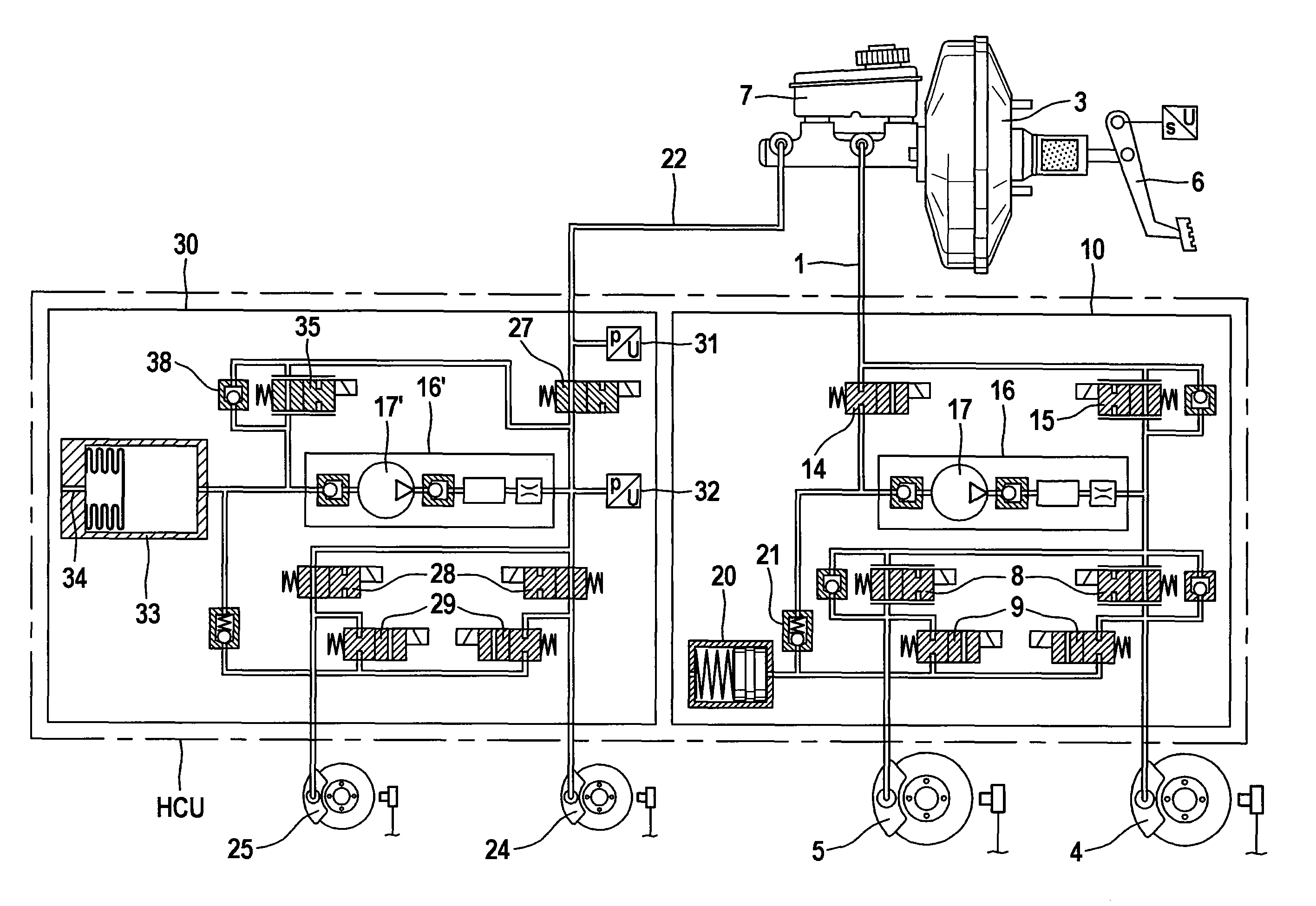Brake system for a motor vehicle
a technology for brake systems and motor vehicles, applied in brake systems, mechanical equipment, transportation and packaging, etc., can solve problems such as negative pressure over a prolonged period of time, and achieve the effect of satisfying requirements
- Summary
- Abstract
- Description
- Claims
- Application Information
AI Technical Summary
Benefits of technology
Problems solved by technology
Method used
Image
Examples
Embodiment Construction
[0028]The brake system shown in FIG. 1 is a brake system which in addition to four friction brakes 4, 5, 24, 25 also comprises an electrical alternator (not shown) for generating electrical energy and as a regenerative brake. The brake system is preferably designed so that a maximum possible brake torque will be applied via the electrical alternator, in order to achieve a high motor vehicle efficiency. Alternatively, instead of an alternator a flywheel mass accumulator or a hydraulic converter with hydraulic accumulator may be provided, which convert kinetic energy into potential energy in order to reuse this later to drive the motor vehicle.
[0029]The brake system is provided with a brake booster, which is designed as a tandem master cylinder 3, preferably power-assisted. The brake pressure applied by the tandem master cylinder 3 is transmitted to the friction brakes 4, 5, 24, 25 by a brake fluid via hydraulic lines 1, 22 and the hydraulic units 10 and 30. The hydraulic unit 10 acts...
PUM
 Login to View More
Login to View More Abstract
Description
Claims
Application Information
 Login to View More
Login to View More - R&D
- Intellectual Property
- Life Sciences
- Materials
- Tech Scout
- Unparalleled Data Quality
- Higher Quality Content
- 60% Fewer Hallucinations
Browse by: Latest US Patents, China's latest patents, Technical Efficacy Thesaurus, Application Domain, Technology Topic, Popular Technical Reports.
© 2025 PatSnap. All rights reserved.Legal|Privacy policy|Modern Slavery Act Transparency Statement|Sitemap|About US| Contact US: help@patsnap.com



